Trade names Principen, others MedlinePlus a685002 Pregnancycategory A (Au), B (U.S.) Formula C16H19N3O4S CAS ID 69-53-4 | AHFS/Drugs.com Monograph License data US FDA: Ampicillin Molar mass 349.41 g/mol | |
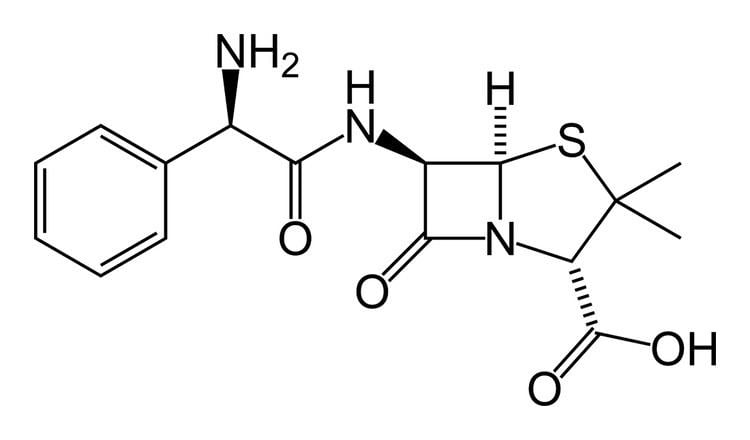 | ||
IUPAC ID (2S,5R,6R)-6-([(2R)-2-amino-2-phenylacetyl]amino) -3,3-dimethyl-7-oxo-4-thia-1-azabicyclo[3.2.0]heptane-2- carboxylic acid | ||
Antibiotics for acne effectiveness and side effects of antibiotics for acne
Ampicillin is an antibiotic used to prevent and treat a number of bacterial infections, such as respiratory tract infections, urinary tract infections, meningitis, salmonellosis, and endocarditis. It may also be used to prevent group B streptococcal infection in newborns. It is used by mouth, by injection into a muscle, or intravenously. Like all antibiotics, it is not useful for the treatment of viral infections.
Contents
- Antibiotics for acne effectiveness and side effects of antibiotics for acne
- Ampicillin antibiotics and the treatment of acne
- Medical uses
- Side effects
- Mechanism of action
- History
- Cost
- References

Common side effects include rash, nausea, and diarrhea. It should not be used in people who are allergic to penicillin. Serious side effects may include Clostridium difficile colitis or anaphylaxis. While usable in those with kidney problems, the dose may need to be decreased. Its use during pregnancy and breastfeeding appears to be generally safe.
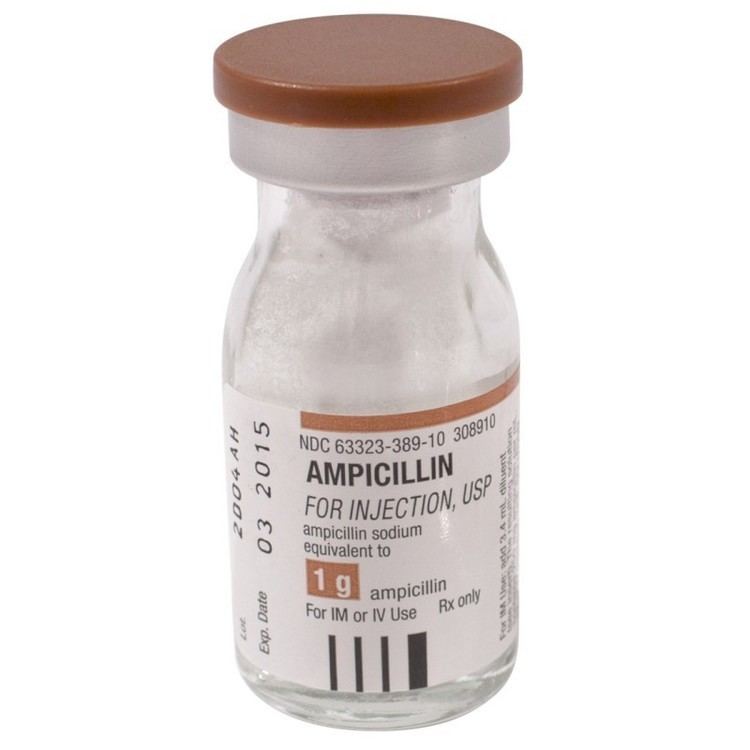
Ampicillin was discovered in 1958 and came into commercial use in 1961. It is on the World Health Organization's List of Essential Medicines, the most effective and safe medicines needed in a health system. Its wholesale cost in the developing world is between US$0.13 and 1.20 for a vial of the intravenous solution as of 2014. In the United States, it is available as a generic medication and 10 days of treatment cost about $13.
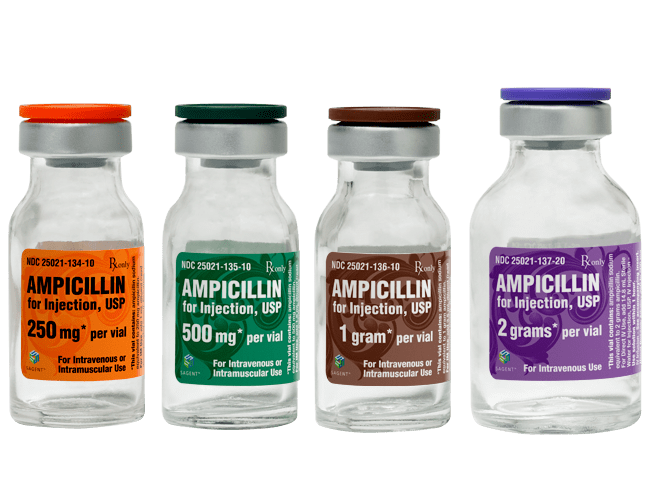
Ampicillin antibiotics and the treatment of acne
Medical uses
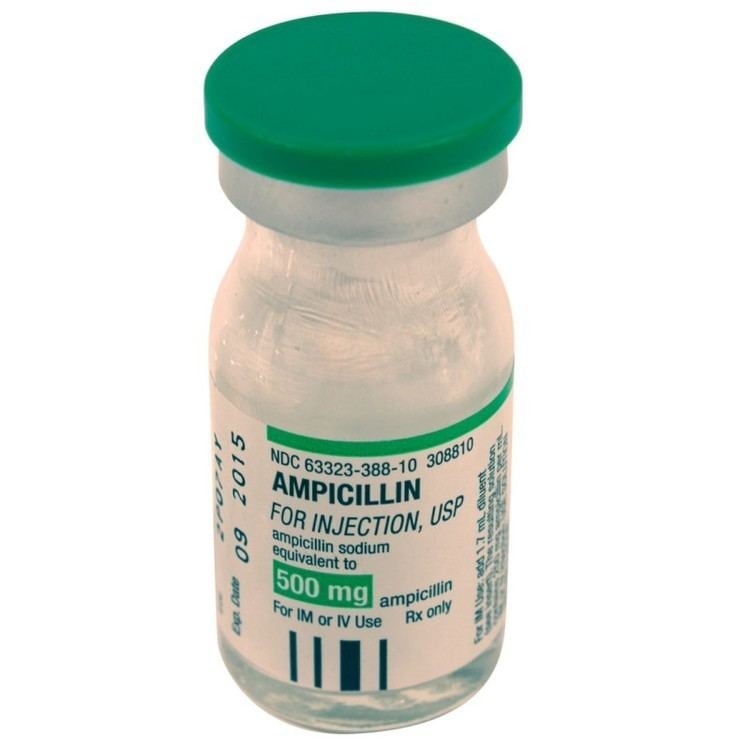
It is active against many Gram-positive and Gram-negative bacteria. Ampicillin was the first 'broad spectrum' penicillin with activity against Gram-positive bacteria including Streptococcus pneumoniae, Streptococcus pyogenes, some isolates of Staphylococcus aureus (but not penicillin-resistant or methicillin-resistant strains), and some Enterococcus. Activity against Gram-negative bacteria includes Neisseria meningitidis, some Haemophilus influenzae, and some of the Enterobacteriaceae. Its spectrum of activity is enhanced by co-administration of sulbactam, a drug that inhibits beta lactamase, an enzyme produced by bacteria to inactivate ampicillin and related antibiotics.

It is used for the treatment of infections known to be or highly likely to be caused by these bacteria. These include common respiratory infections including sinusitis, bronchitis, and pharyngitis, as well as otitis media. In combination with vancomycin (which provides coverage of ampicillin-resistant pneumococci), it is effective for the treatment of bacterial meningitis. It is also used for gastrointestinal infections caused by consuming contaminated water or food, such as Salmonella, Shigella, and Listeria.
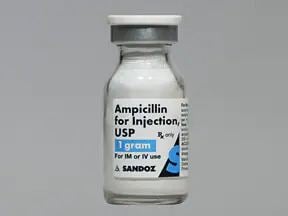
Ampicillin is a first-line agent for the treatment of infections caused by Enterococci. The bacteria are an important cause of healthcare-associated infections such as endocarditis, meningitis, and catheter-associated urinary tract infections that are typically resistant to other antibiotics.
Side effects
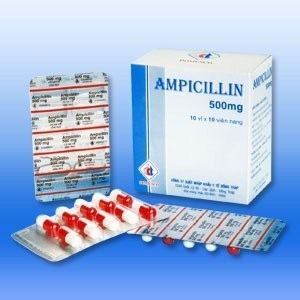
Ampicillin is relatively nontoxic. Its most common side effects include rash, diarrhea, and nausea. In very rare cases, it causes severe side effects such as angioedema, anaphylaxis, and C. difficile colitis.
Mechanism of action
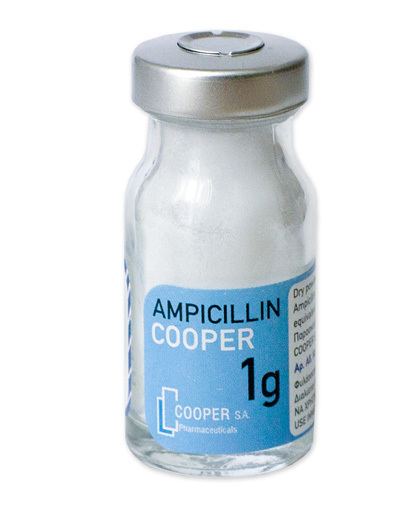
Ampicillin is in the penicillin group of beta-lactam antibiotics and is part of the aminopenicillin family. It is roughly equivalent to amoxicillin in terms of activity.
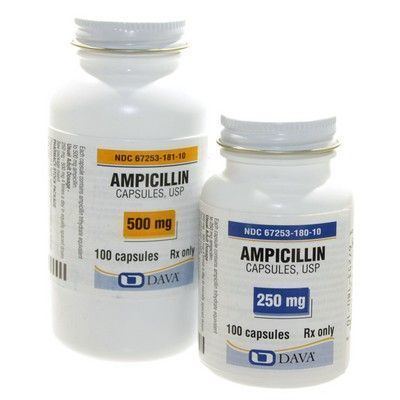
Ampicillin is able to penetrate Gram-positive and some Gram-negative bacteria. It differs from penicillin G, or benzylpenicillin, only by the presence of an amino group. That amino group helps the drug penetrate the outer membrane of Gram-negative bacteria.
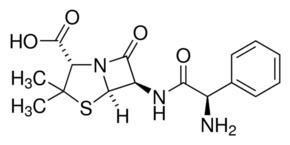
Ampicillin acts as an irreversible inhibitor of the enzyme transpeptidase, which is needed by bacteria to make the cell wall. It inhibits the third and final stage of bacterial cell wall synthesis in binary fission, which ultimately leads to cell lysis; therefore, ampicillin is usually bacteriolytic.
History
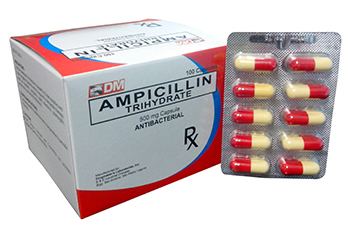
Ampicillin has been used extensively to treat bacterial infections since 1961. Until the introduction of ampicillin by the British company Beecham, penicillin therapies had only been effective against Gram-positive organisms such as staphylococci and streptococci. Ampicillin (originally branded as 'Penbritin') also demonstrated activity against Gram-negative organisms such as H. influenzae, coliforms, and Proteus spp.
Cost
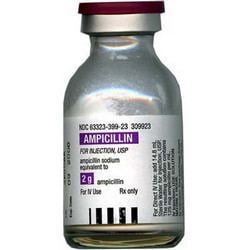
Its wholesale costs is between US$0.13 and 1.20 for a vial of the intravenous solution as of 2014. In the United States, it is available as a generic medication and 10 days of treatment cost about $13.
